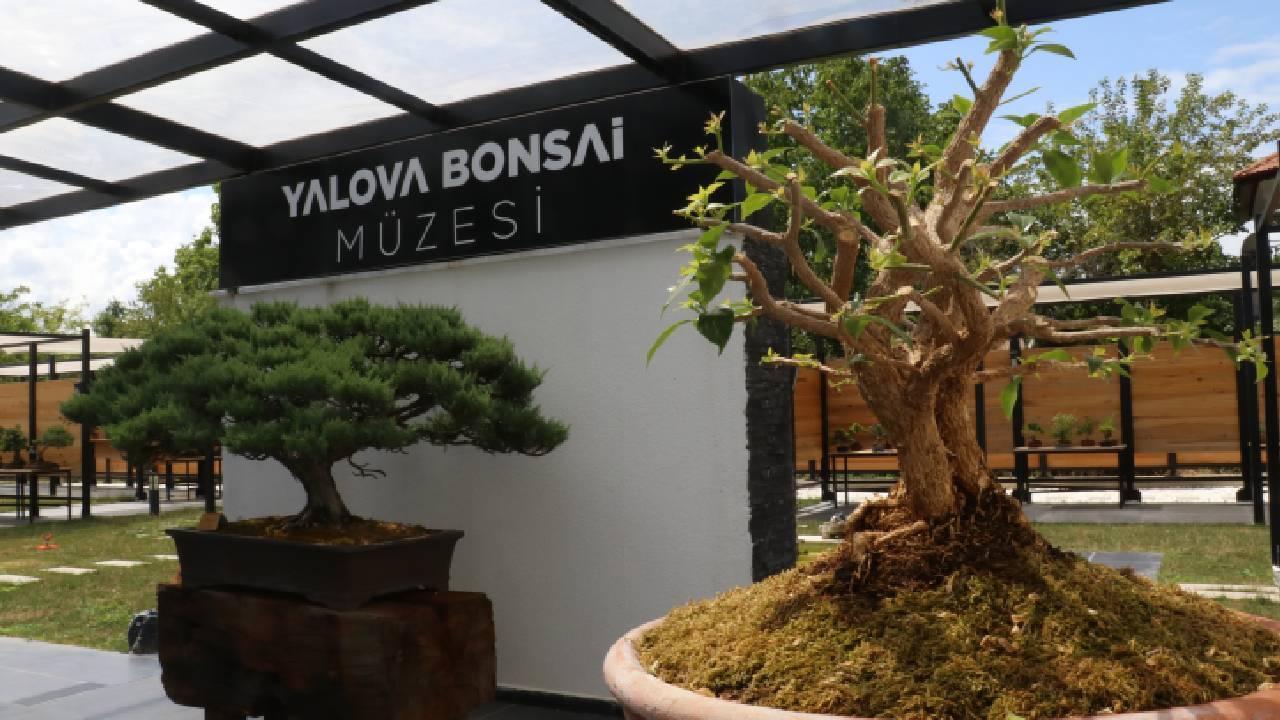Bonsai collection kept alive at museum
YALOVA

Fourteen bonsai trees of late Turkish environmentalist Hayrettin Karaca, nicknamed “Grandpa Earth,” in the Yalova Bonsai Museum — Türkiye's first and Europe's largest — are being passed down to future generations.
The Yalova Bonsai Museum, located in the Kadıköy neighborhood in Yalova city center, exhibits 180 miniature trees of 80 species. The display, which includes Türkiye’s most important bonsai examples, which is the art of growing trees in pots by pruning, dwarfing and shaping them with special techniques, fascinates its visitors with its unique beauty.
Bonsai artist Hasan Şimşek stated that some of the most valuable trees in the museum came from the collection of Karaca, who founded the Turkish Foundation for Combating Soil Erosion (TEMA), the country's largest environmental non-profit organization, in 1992.
Şimşek stated that when he first started the art of bonsai, he learned that Karaca also had a collection and that he frequently visited the museum and took inspiration from those trees.
“In the following years, I started to make progress in the art of bonsai. Due to his age, Karaca was not able to take care of his trees as much as he used to in the past. We tried to support him and took care of some of his trees. Later, his trees were neglected because he passed away. We took over some of them. We especially tried to take over the trees that had memories and a certain story. Periodic maintenance of these trees is currently being carried out in our museum. The history of these trees is also explained to visitors,” he said.
Şimşek stated that the Scots pine uprooted from the Taurus Mountains by Karaca and his friends in 1974 is one of the most valuable works for the museum.
“It has been in a pot for 50 years and holds the title of the longest-kept bonsai tree in Türkiye. Karaca usually shaped his trees by pruning, but we also applied wire drawing, which has an important place in bonsai art, to the tree. It is not much lower than any high-level tree in Japan. In Japanese bonsai art, trees with certain characteristics are given names. They are called name trees. They are registered as a kind of living monument," he said.
"We also have two trees with names in our museum. The first is ‘Pasha’ at the entrance of the museum. It is a very precious tree for us. The second is this scots pine tree, which is called ‘Dedeağaç.’ In fact, the kindergarten students who visited the museum gave this name to it. Karaca was also known as Grandpa Earth. When we mentioned the connection between this tree and Karaca, the children began referring to it as ‘Dedeağaç.’ Inspired by their choice, we decided to officially name the tree Dedeağaç. It is the oldest tree in the museum, around 80 years old. We will enjoy taking care of it in the years to come. The generations who are new to bonsai after us will continue to care for and tend to the tree,” he added.
Stating that he had taken 26 trees from Karaca’s collection in 2015, Şimşek said, “Some of them had serious problems, and we lost a few. Currently, there are 14 trees from his collection in our garden, and I also have seven trees in my personal collection. My daughter continues the art of bonsai, and I have passed my personal collection on to her. Thus, at least two generations have been involved. We will continue to focus on bonsai training and are hopeful that this generation will maintain the trees.”
Hayrettin Karaca
Karaca, who died on Jan. 20, 2020, at the age of 97, was a scientist and one of Turkey's most influential environmentalists.
In his 50s, he launched Turkey's very first private arboretum in northwestern Yalova province, which quickly picked up a global following among botanists. He collected a myriad of seeds for the arboretum both in Turkey and abroad, visiting botanical gardens and widening his circle of nature enthusiasts.
The garden is also home to some 14,000 species and serves as conservation for endangered species.
Karaca's passion for planting saplings and for wildlife drove him to launch the TEMA Foundation in 1992. Since its foundation 28 years ago, TEMA has been the country's leading environmental advocacy group, reaching nearly 500,000 members, as well as active volunteers and receiving the Land for Life Award from the U.N. Convention to Combat Desertification in 2012.
He had received many field honors, including U.N. Forest Hero Award.
















